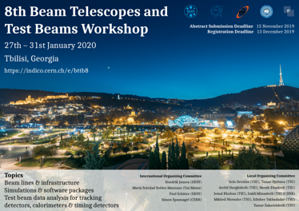Speaker
Description
The Beamline for Schools (BL4S) competition is a worldwide competition targeted at teams of high school students. The winning teams are invited to travel to a research institute and perform their proposed experiments in a real test beam setup. The first five years the experiments were performed at CERN, but in 2019, due to the ongoing shutdown at CERN, the experiments were performed at the DESY II Test Beam Facility.
Since the start of the BL4S competition in 2014, the BL4S Data Acquisition System (DAQ) has been based on the Atlas ROD Crate DAQ (here called TDAQ for short). It is a VME based DAQ originally developed for ATLAS, in particular for test beam setups. The choice to use an existing DAQ brings with it some challenges but has some advantages as well. TDAQ is a complex system, needing to support multiple machines in the Atlas DAQ environment. This complexity makes the system difficult to fully comprehend but allows to have a very functional and flexible setup, such as having computers dedicated to monitoring the data taking, thus separating the data acquisition and the data monitoring functionality.
With the competition taking place at DESY, some new detectors became available, specifically the EUDET-type beam telescope. In addition, for one of the BL4S detectors, the micromegas, new readout electronics were used. With these changes, the BL4S DAQ had to be updated. The fundamental change in the BL4S DAQ for 2019 was the integration of the TDAQ and EUDAQ into a hybrid DAQ. This merging allowed for simultaneous data taking with the beam telescope and the pre-existing BL4S detectors in an integrated manner.
This presentation will discuss some of the tradeoffs with using TDAQ in the context of the BL4S competition as well as some of the modifications and adaptations which have been performed for the competition in 2019 taking place at DESY.
